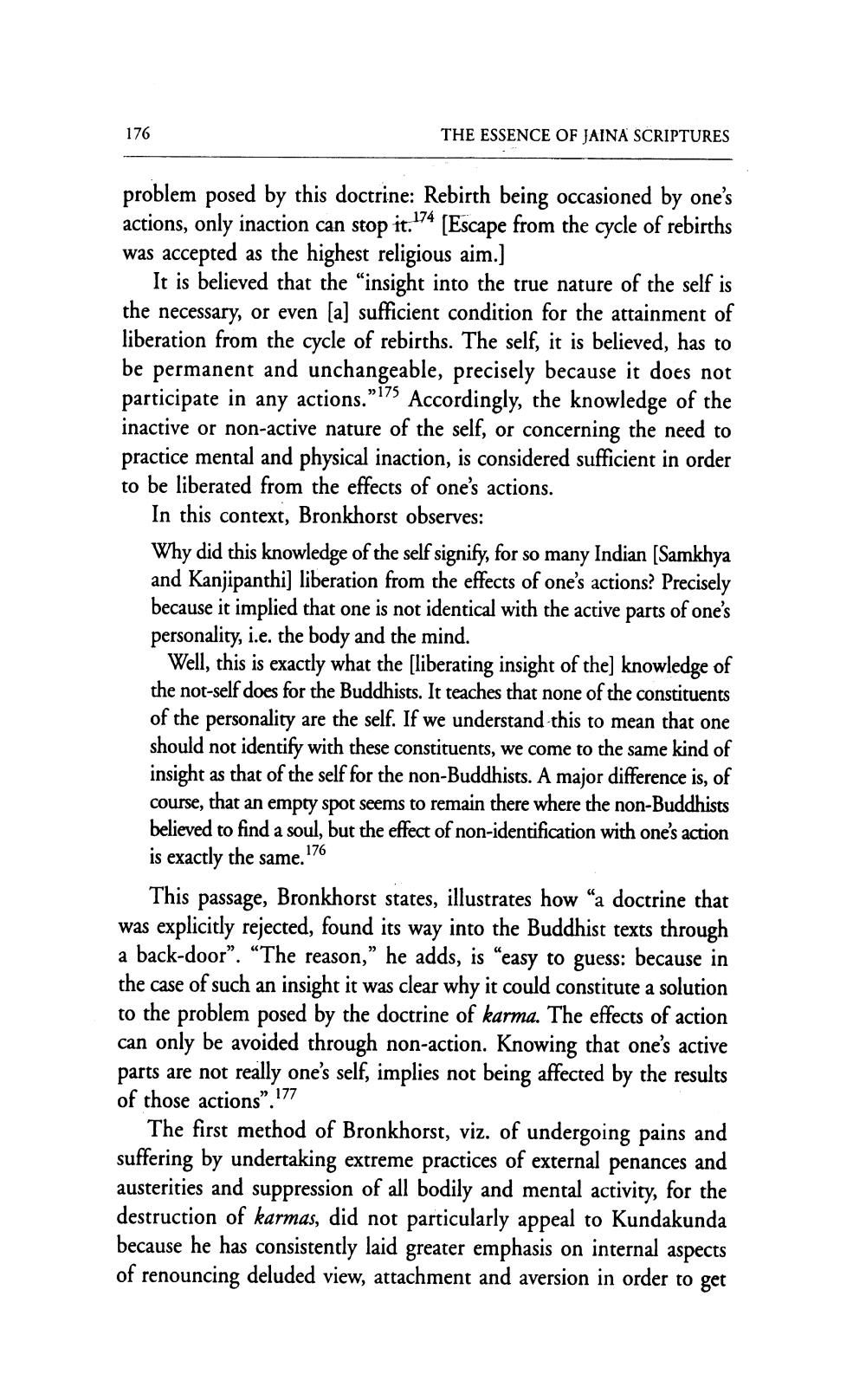________________
176
THE ESSENCE OF JAINA SCRIPTURES
174
problem posed by this doctrine: Rebirth being occasioned by one's actions, only inaction can stop it." [Escape from the cycle of rebirths was accepted as the highest religious aim.]
It is believed that the "insight into the true nature of the self is the necessary, or even [a] sufficient condition for the attainment of liberation from the cycle of rebirths. The self, it is believed, has to be permanent and unchangeable, precisely because it does not participate in any actions."175 Accordingly, the knowledge of the
inactive or non-active nature of the self, or concerning the need to practice mental and physical inaction, is considered sufficient in order to be liberated from the effects of one's actions.
In this context, Bronkhorst observes:
Why did this knowledge of the self signify, for so many Indian [Samkhya and Kanjipanthi] liberation from the effects of one's actions? Precisely because it implied that one is not identical with the active parts of one's personality, i.e. the body and the mind.
Well, this is exactly what the [liberating insight of the] knowledge of the not-self does for the Buddhists. It teaches that none of the constituents of the personality are the self. If we understand this to mean that one should not identify with these constituents, we come to the same kind of insight as that of the self for the non-Buddhists. A major difference is, of course, that an empty spot seems to remain there where the non-Buddhists believed to find a soul, but the effect of non-identification with one's action is exactly the same.
176
This passage, Bronkhorst states, illustrates how "a doctrine that was explicitly rejected, found its way into the Buddhist texts through a back-door". "The reason," he adds, is "easy to guess: because in the case of such an insight it was clear why it could constitute a solution to the problem posed by the doctrine of karma. The effects of action can only be avoided through non-action. Knowing that one's active parts are not really one's self, implies not being affected by the results of those actions". 177
The first method of Bronkhorst, viz. of undergoing pains and suffering by undertaking extreme practices of external penances and austerities and suppression of all bodily and mental activity, for the destruction of karmas, did not particularly appeal to Kundakunda because he has consistently laid greater emphasis on internal aspects of renouncing deluded view, attachment and aversion in order to get




